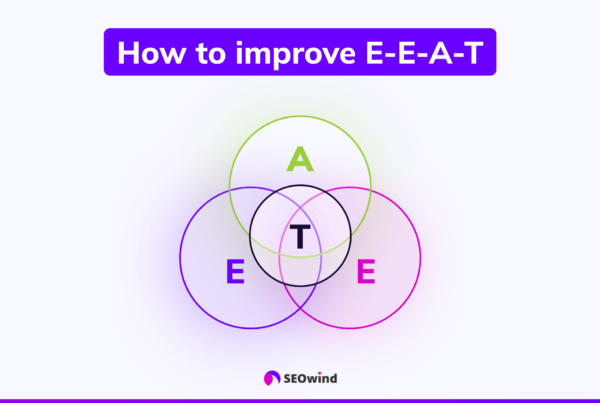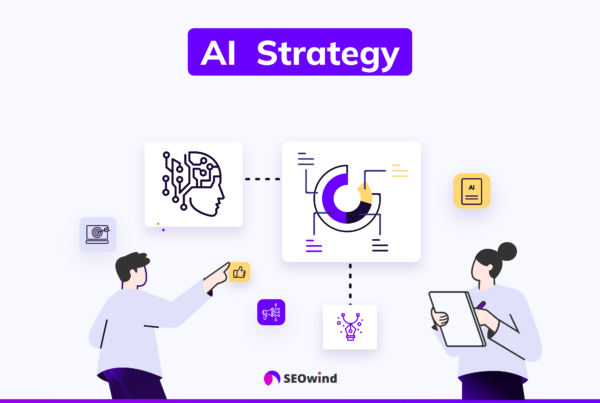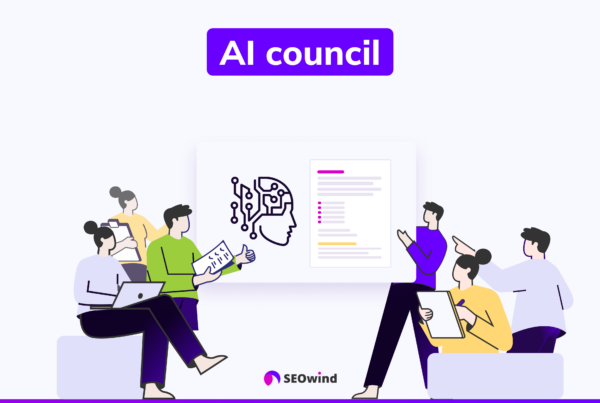You must have heard: Businesses must pay attention to the importance of an effective content marketing framework. But what is it exactly — and how does this “blueprint for success” help your organization stand out from the crowd? This comprehensive guide will explore essential components, best practices, and pitfalls to avoid when creating a content marketing framework that delivers desired results.
What is Content Marketing Framework?
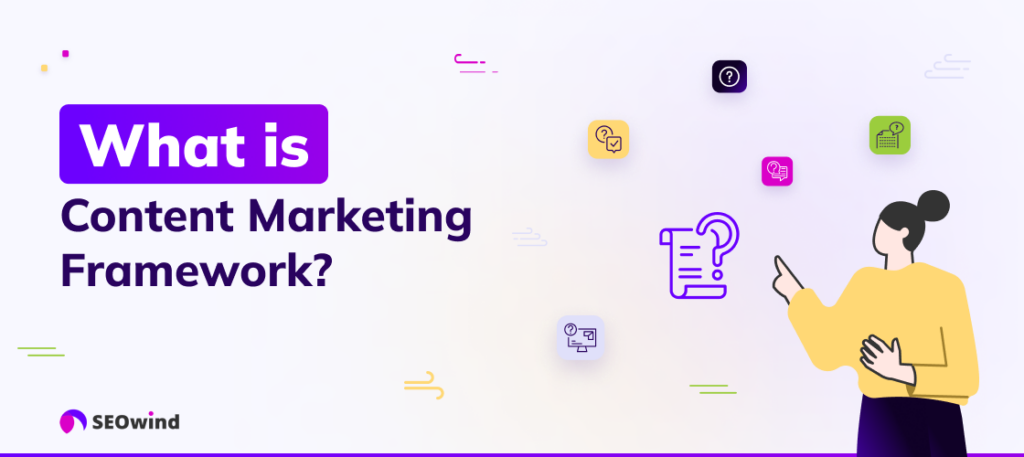
A content marketing framework is a structured approach designed to align your company’s business goals with its content creation, distribution, and audience engagement processes. It is an invaluable tool that helps you plan, execute, and optimize your content efforts across various platforms. By providing a clear roadmap for success based on authentic insights about your target audience’s needs and preferences, implementing the right marketing frameworks enables you to capture their attention and drive measurable outcomes effectively.
The Benefits of a Content Marketing Framework
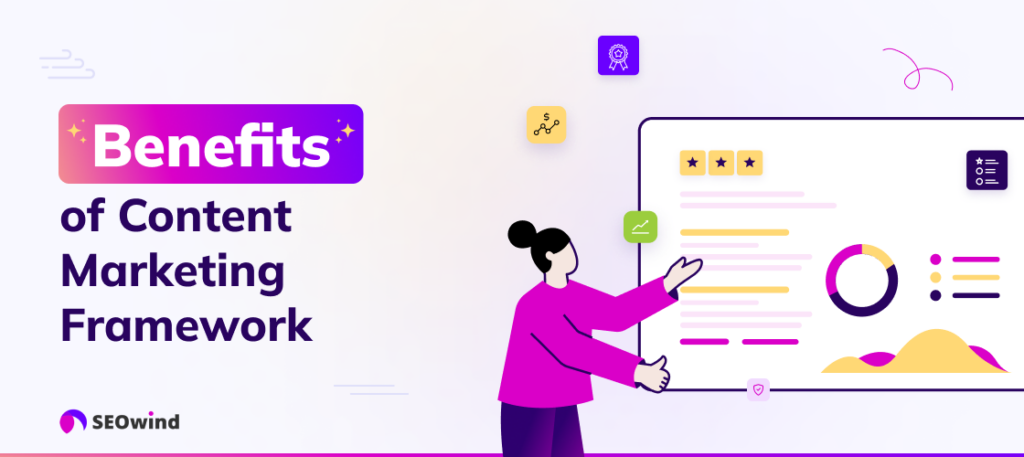
A well-designed content marketing framework offers numerous advantages to businesses and individuals seeking to improve their online presence, increase brand awareness, and drive measurable results.
Let’s explore the key benefits of implementing a comprehensive content marketing framework.
Enhanced Brand Recognition and Trust
Your brand becomes more recognizable and trustworthy when consistently producing high-quality content that resonates with your target audience’s needs and preferences. A structured content marketing framework allows you to create content with a cohesive message across all platforms, resulting in stronger brand identity and increased trust among potential customers.
Improved Organic Reach
An essential advantage of adopting a content marketing strategy framework is enhancing your organic reach through search engines like Google or Bing. Creating relevant, informative, and engaging content that aligns with your audience’s interests and responds to their queries can positively influence your website’s SEO performance. This leads to better visibility in search results and attracts more organic traffic without incurring additional costs frequently associated with paid ads.
Higher Conversion Rates
One of the primary goals of any marketing endeavor is turning prospects into loyal customers. With an efficient content marketing framework, you can tailor your messages toward guiding visitors along the buyer’s journey – from generating interest to influencing purchase decisions. High-quality, persuasive content designed for specific sales funnel stages increases engagement levels. It encourages users to take desired actions (such as signing up for a newsletter or purchasing a product).
Cost-Effective Marketing Solution
Compared to traditional marketing methods like print advertisements or billboards, investing in a robust content marketing strategy framework is often more cost-effective in the long run. Producing digital resources such as blog posts or eBooks may require time and effort; however, once created, these assets continue working for you without ongoing expenses.
Better Audience Engagement & Community Building
A relationship-centric approach lies at the heart of the content marketing framework. You can foster community around your brand by understanding and addressing your audience’s challenges, concerns, and aspirations. Engaging content encourages conversations through social media or comment sections. It drives interactions between you and your audience and within the audience, themselves, further cementing loyalty to your brand.
Types of Content Marketing Frameworks & Differences
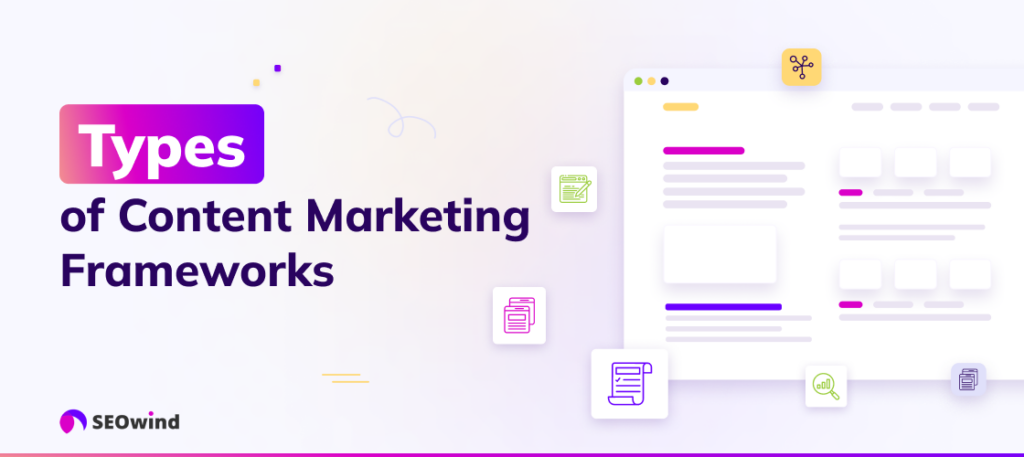
Content marketing frameworks are essential for streamlining efforts and ensuring a successful content strategy. Various frameworks suit different business needs, objectives, and industries.
This section will explore the multiple approaches to structuring a practical content marketing framework and its distinctive features.
Linear Framework
A linear content marketing framework creates a step-by-step process that guides your marketing team from goal setting to outcomes. This approach is straightforward to follow. Still, it may not account for overlapping tasks or sudden changes in priorities.
Key aspects of a linear framework include:
- Clear stages with specific goals
- Emphasis on sequential workflows
- Focused on single projects at a time
- May require adjustments for ongoing campaigns
Modular Framework
The modular content marketing framework allows organizations to divide projects into separate components (or “modules”) that can be completed independently by different teams or individuals. Modular frameworks enable flexibility, scalability, and easy adaptation without affecting other areas of the process.
Key characteristics of a modular framework include:
- Components can be easily added or amended
- Suitable for businesses with diverse projects in progress simultaneously
- Facilitates collaboration between cross-functional teams
- Increased overall efficiency due to streamlined processes
Cyclical Framework
As opposed to the static nature of some frameworks, the cyclical content marketing framework incorporates constant evaluations and refinements within its workflow, accounting for continuous improvement as part of its process. Marketers using this iterative approach frequently measure performance indicators and modify strategies accordingly.
Distinctive attributes of a cyclical framework entail:
- Periodic analysis of campaign success metrics
- Embracing data-driven decisions
- Inclusion of feedback loops for consistent optimization
- Adjustments made in real-time to maximize outcomes
Goal-Centric Framework
The goal-centric content marketing framework prioritizes achieving key objectives above all else. It aims to align content creation, distribution, and analysis with specific business goals to ensure coherent decision-making and strategic implementation.
Noteworthy traits of a goal-centric framework involve:
- Clear definition of business objectives
- Direct connection between content output and desired outcomes
- Measurement indicators tied closely to goals
- A strong sense of purpose when crafting each component of the content strategy
Understanding the differences between these types of content marketing frameworks will help you select the most suitable approach for your organization. Whichever option you choose, always remember that consistency, adaptability, and frequent monitoring are essential factors for driving success in content marketing.
Components of a Content Marketing Framework
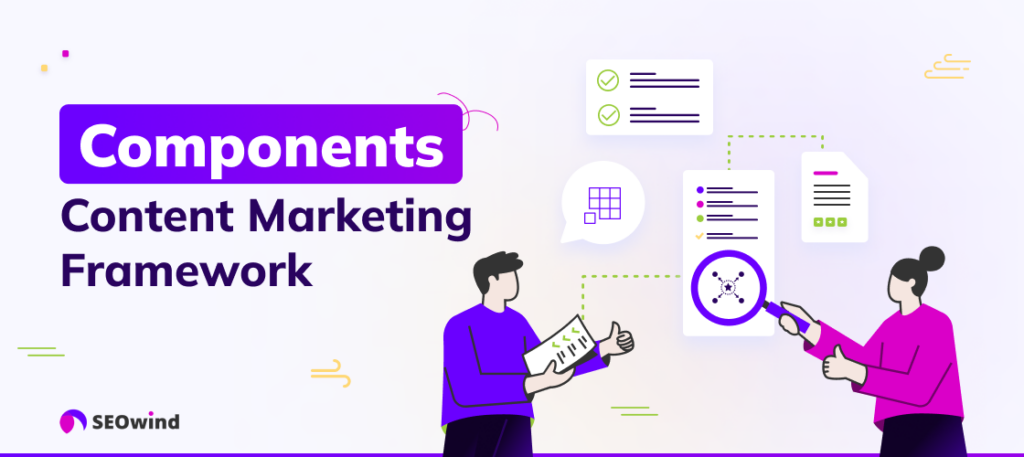
A successful content marketing framework consists of ten essential components. Each component is crucial in organizing, executing content marketing, and measuring your content marketing efforts.
Goals
The foundation of an effective content marketing framework is establishing clear, measurable goals that align with your business objectives. These can include increasing website traffic, boosting brand awareness, generating leads, or enhancing customer engagement. Setting specific targets will help you manage the content creation process and allow you to measure the success of your content strategy.
Audience
Identifying and understanding your target audience is vital for crafting engaging and relevant content. Develop buyer personas to represent your ideal customers, considering demographics, background information, challenges they face, and their preferred communication channels. The more insights you gain about your audience’s needs and preferences, the better positioned you are to create compelling content that appeals to them.
Platforms
Selecting suitable platforms is critical for ensuring that your target audience discovers the valuable content you produce. These can range from websites and blogs to social media networks like Facebook or LinkedIn. Choose platforms where your target audience spends time online and consider factors such as SEO (search engine optimization), user experience, performance analytics capabilities, and ease of use when selecting these channels.
Content Types
To engage various segments within your target audience effectively, utilize multiple content types such as:
- Blog posts
- Ebooks
- Case studies
- Templates
- Infographics
- Videos
- Podcasts
Working with diverse formats helps address different learning styles and engages users through varied experiences.
Content Marketing Team Members
Assemble a skilled team capable of producing high-quality content regularly while staying on-brand across all platforms. Consider including professionals such as writers/editors/content producers who create materials; graphic designers who develop visually appealing images; videographers who film captivating footage; audio engineers who edit podcasts or voiceovers.
Schedule
Decide how frequently you will publish content by creating a detailed schedule that outlines the following:
- Topics
- Mediums (blogs, videos, infographics)
- Publishing channels (website, social media)
- Deadlines for the creation and publication of each piece
Maintaining a consistent publishing cadence is essential for building an audience and establishing trust with readers over time.
Promotion Strategies
Effectively promote your content through various methods such as email campaigns, targeted ads on social media platforms or search engines, influencer partnerships, or guest posting opportunities. This ensures your target audience remains aware of new offerings while keeping them engaged with your brand throughout their customer journey.
Tools and Technologies
Leverage tools and technologies to help manage and optimize your content marketing framework. Content management systems like WordPress or HubSpot facilitate collaboration between team members; SEO tools like SEMrush assist you in optimizing content for search engine rankings; project management software like Trello enables streamlined organization among different team functions.
Progress Tracking
Monitor published content’s performance using analytical tools to gain insights into user preferences and behaviors. This allows you to continually refine your content marketing framework based on real-time feedback while tracking relevant KPIs such as engagement rates, conversion rates, shares/likes/comments data, and more.
Budget
Establish a budget that factors in costs associated with talent acquisition/hiring expenses, technological applications (CMS software/license fees), and paid advertising/promotional strategies – ensuring profitability remains top-of-mind when
How to Create Content Marketing Framework

Developing an effective content marketing framework requires thoughtful planning and focused execution. The following steps will guide you through creating a successful and adaptable content strategy framework.
Step 1: Define Your Goals
Before diving into creating your content marketing framework, take some time to define the specific goals you want to achieve. Consider setting SMART goals (Specific, Measurable, Achievable, Relevant, Time-bound) that align with your overall business objectives. These can include:
- Increasing brand awareness
- Generating leads
- Boosting website traffic
- Enhancing customer engagement
- Driving sales conversions
Having clear and defined goals will make it much easier to measure success later on in the process.
Step 2: Identify Your Audience
The next step is to pinpoint your target audience. Assess who you are trying to reach by considering demographics such as age, gender, location, interests, and job titles. Additionally, dive deeper by outlining their desires and needs and the pain points they may be facing.
Creating detailed buyer personas can help your team better understand these individuals and tailor your content strategy accordingly. Remember that different types of content may appeal more to specific audience segments.
Step 3: Conduct a Content Audit
A comprehensive content audit is critical for assessing what’s working and isn’t within your existing content strategy framework. During this stage:
- Review existing content pieces to determine their relevance, quality, and performance against set benchmarks.
- Categorize each piece by its topic or theme.
- Identify gaps or areas where more information is needed.
- Analyze competitors’ strategies to glean insights on potential opportunities for improvement.
With this analysis, you can create a roadmap for future improvements.
Step 4: Choose an Appropriate Content Management System
Selecting the right Content Management System (CMS) streamlines management tasks and content distribution. Evaluate available options based on factors such as:
- Ease of use
- Scalability
- Integration with your existing technology stack
- Support for multiple formats and platforms
Some widely utilized CMS options include WordPress, HubSpot, Drupal, and Joomla.
Step 5: Determine the Types of Content You Want to Create
Now that you have established your goals, target audience, and a high-level overview of your content strategy framework, consider the types of content that will resonate most effectively with your intended audience. This can vary across blog posts, ebooks, case studies, templates, infographics, videos, or podcasts.
Carefully chosen content formats should simplify conveying messages while maximizing the chances of provoking the desired outcome from your target market.
Step 6: Brainstorm Ideas for Content Creation
To make great content, pick the suitable types first. Then gather ideas and create impactful pieces. You can use keyword research software or brainstorming techniques to find popular topics.
Ensure alignment between derived topics and previously defined goals to maintain a cohesive marketing framework.
Step 7: Publish and Manage Your Content
Finally, publish approved content ideas using predetermined schedules dictated by informed analysis. Regularly revisit published materials to keep them fresh and periodically adjust distribution approaches depending on results garnered over time. By managing these assets meticulously within an optimized marketing strategy framework, you’ll set the stage for continuous improvement within this core business component.
Content Marketing Strategy Examples
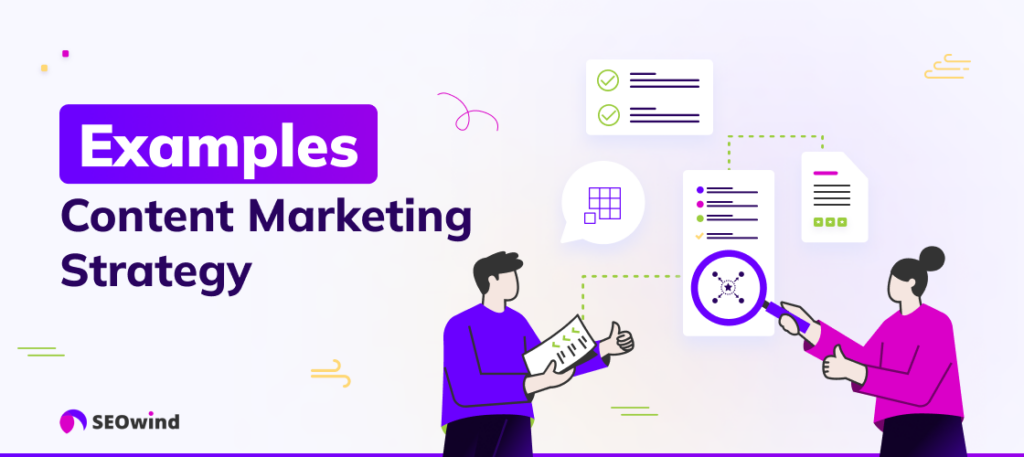
There is no one-size-fits-all content marketing framework. Every organization has unique needs, depending on its goals, target audience, and industry. Here are three noteworthy examples of successful content marketing strategies demonstrating the power of having a well-defined framework.
Buffer’s Open Blogging Approach
Buffer built its reputation in social media management primarily through its thought-provoking blog offering actionable advice for marketers and entrepreneurs. The company embraced transparency from the outset, sharing detailed information about revenue metrics and employee salaries. Their distinctive approach includes elements like:
- In-depth blog posts on social media tips, case studies, and industry trends
- Guest blogging opportunities to involve influencers and increase reach
- Ebooks and whitepapers offering expert insights
- Weekly podcasts providing learning opportunities on-the-go
This strategic combination allowed Buffer to position itself as an authority in the market while fostering goodwill among customers.
HubSpot’s Inbound Marketing Methodology
HubSpot epitomizes the ultimate success story in inbound marketing. Its comprehensive ecosystem comprises various tools, resources, and educational materials designed to help businesses grow using inbound methods. Key components of HubSpot’s content marketing strategy include:
- Informative blog articles catering to different stages of the buyer’s journey
- Free resources like ebooks, templates, and reports for easy content consumption
- Regular webinars featuring industry experts and practitioners sharing knowledge
- Social media channels for real-time engagement with prospects and customers
These examples illustrate the effectiveness of a well-designed content marketing plan that caters to their respective target audiences, goals, and objectives. Analyzing such strategies can serve as inspiration for building your unique framework tailored to your business needs.
Types of Content Marketing
A crucial aspect of your content marketing framework is determining the types of content you’ll create to engage and inform your target audience. These varied formats cater to different preferences and consumption habits, providing the broadest possible reach for your messaging.
Let’s briefly present eight popular content formats to incorporate into your marketing strategy.
Blog Posts
Blog posts are a staple in any content marketing strategy, offering informational and engaging articles on industry-specific topics or insights worth sharing. They allow for both long-form and short-form writing, making them versatile for presenting ideas that resonate with your audience. Additionally, blog posts boost search engine optimization (SEO) efforts as search engines can easily index them, driving more organic traffic to your website.
Ebooks
Ebooks represent longer written pieces that delve deeper into complex subjects than regular blog posts. Their comprehensive nature is an educational resource for readers who want a complete understanding of a specific topic. Creating high-quality ebooks demonstrates expertise and authority within your industry. When offered as gated content behind email registration forms, it can also function as lead magnets.
Case Studies
Case studies showcase real-world applications and tangible results achieved through using a product or service. Case studies provide social proof validating claims about product effectiveness or service quality by narrating success stories from satisfied customers. This type of content allows prospects to visualize how adopting similar solutions may also deliver positive outcomes for their challenges.
Templates
Creating practical templates helps simplify tasks related to project management, goal-setting, operational processes, or design standards. Offering free templates gives users immediate value while positioning your brand as one that understands customer needs well enough to provide hands-on assistance.
Infographics
Infographics excel at distilling data-rich information into visually appealing graphic representations that facilitate easy comprehension. By using attractive colors and striking visuals, infographics catch the reader’s eye and communicate key points in an easily digestible way. This content format appeals to visual learners and enhances your brand’s shareability on social media due to its captivating aesthetics.
Videos
Video content offers a dynamic, entertaining, and immersive experience for the viewer, effectively capturing their attention through audio-visual storytelling. Various video formats can serve different purposes — from explainer videos that elucidate complex concepts to product demonstrations that showcase tangible features. Moreover, platforms like YouTube present additional opportunities for content distribution and discoverability.
Podcasts
Audio-based podcasts provide an intimate listening experience where industry experts or influencers discuss relevant topics. By sharing valuable insights and personal anecdotes within engaging conversations, podcasting endears audiences to your brand’s unique voice, values, or mission on a more relatable level than just written content.
Social Media
Utilizing various social media platforms allows you to interact directly with your audience while disseminating bite-sized content that drives traffic towards more substantial assets like blog posts or ebooks. From LinkedIn articles and Twitter threads to Instagram carousels and Facebook Live sessions, businesses should tailor their messaging according to each platform’s inherent strengths and user demographics.
Measuring the Success of Your Content Marketing Framework

A crucial component of the content marketing framework is metrics measurement aligned with your primary goals. These performance indicators will help you evaluate your strategy’s success, identify improvement areas, and make data-driven decisions for future strategic development.
Let’s explore various performance measures that you can use to gauge the efficacy of your content marketing framework.
Key Performance Indicators (KPIs)
When measuring content marketing success, KPIs are fundamental in quantifying results. Some common KPIs include:
- Organic website traffic: Measures the number of visitors arriving at your site via search engines without paid promotion.
- Social media engagement: Captures interactions such as likes, shares, comments, and followers on social networks.
- Lead generation: Refers to new prospects generated through content consumption, such as ebook downloads or newsletter subscriptions.
- Conversion rates: Analyze the percentage of users who complete a desired action after consuming your content (e.g., purchasing).
- Bounce rate: Demonstrates user engagement by tracking how quickly visitors leave after landing on a webpage.
By identifying KPIs closely tied to your objectives, you’ll gain actionable insights into the progress and impact of your content marketing efforts.
Customer Feedback
Aside from quantitative data like KPIs, qualitative feedback can provide valuable context related to audience satisfaction and brand perception. When interacting with your content, solicit customer responses via surveys or direct communication to better understand their needs and preferences.
ROI Analysis
Return on Investment (ROI) is an essential aspect of assessing any business endeavor—content marketing being no exception. By calculating ROI for each content or campaign using factors like production costs and revenue generated, you’ll unveil concrete evidence supporting or prompting changes within your frameworks’ components.
Benchmark Comparisons
Consistently comparing current content performance to historical benchmarks can shed light on trends and progress over time. This approach allows you to diagnose areas of strength or weakness in your framework, thereby informing ongoing optimization efforts.
Competitor Analysis
Understanding the landscape within which you operate is vital for success. Conduct a competitor analysis by monitoring their content strategies and outcomes to evaluate how well your framework performs relative to industry standards.
In essence, systematically measuring the effectiveness of your content marketing framework using KPIs, qualitative feedback, ROI analysis, benchmark comparisons, and competitor evaluations will empower you with the data needed for continuous improvement and informed decision-making. Embrace these various methods as diagnostic tools—inspiring consistent growth in your organization’s content marketing effectiveness.
Tips for Optimizing Your Content Marketing Framework
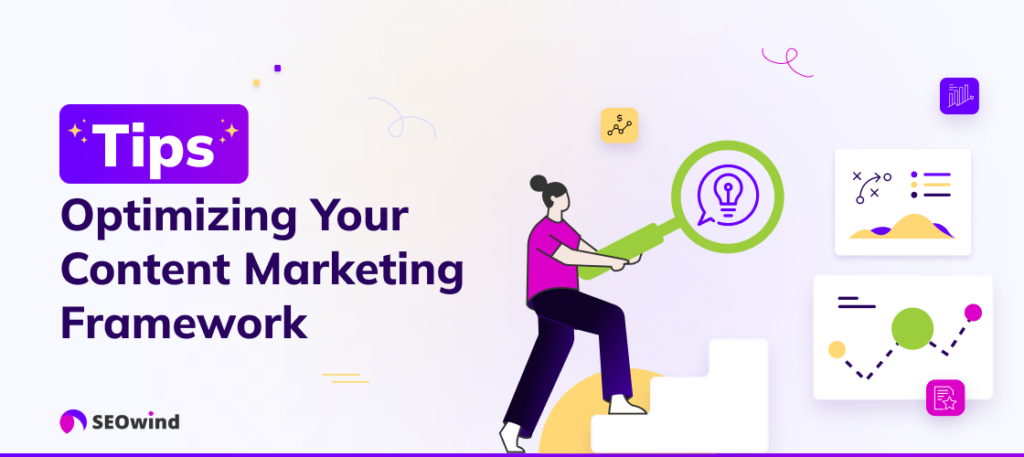
Optimizing your content marketing framework is crucial to achieving desired results. Here are some valuable tips to help you make the best of your content marketing efforts:
Align Your Content with Your Goals
Always ensure that the content you create aligns with your overall goals. This way, you can measure and track progress more efficiently, allowing you to adjust as needed.
Focus on High-Quality Content
High-quality content is essential for a successful content marketing strategy framework. Invest time and effort in creating impactful, informative, and engaging pieces rather than focusing only on quantity.
Utilize SEO Techniques
Implement SEO techniques within your content creation framework to improve visibility and organic search rankings.
- Conduct keyword research & use targeted keywords in titles, headings, and body text.
- Optimize images with descriptive filenames and alt tags.
- Write compelling meta descriptions that accurately summarize the page’s contents.
- Avoid duplicate content; always strive for originality.
Experiment with Different Content Formats
Expand your audience reach with various formats, such as articles, infographics, videos, podcasts, or social media posts within your marketing strategy framework.
Adopt a Multi-channel Approach
Distribute your content across multiple platforms (website/blog, social media channels, email newsletters) as it increases exposure while effectively reaching different segments of your target audience.
Interact with Your Audience
Engage with readers by inviting feedback and responding promptly to comments/questions on your website or social media platforms—this helps build trust and encourages collaboration between you and your audience.
Collaborate with Influencers & Experts
Partnering with industry influencers/experts can dramatically enhance reach, credibility, & clout within your niche when implementing a content strategy framework.
Monitor Analytics and Adapt Accordingly
Track the performance of your content using analytics tools (e.g., Google Analytics, social media insights), then use this data to improve and refine your content marketing framework continuously.
Regularly Update & Repurpose Content
Schedule updates for evergreen content to maintain relevance, repurpose existing materials into new formats or share valuable information through different channels in your marketing strategy frameworks.
Educate Your Team Members on Best Practices
Provide training and resources to ensure that every member involved in content creation adheres to industry best practices and understands their role within the content marketing framework landscape.
By implementing these optimization tips, you can maximize the effectiveness of your content marketing framework, consistently delivering value to your audience while driving long-term success for your business.
Common Mistakes to Avoid When Creating a Content Marketing Framework
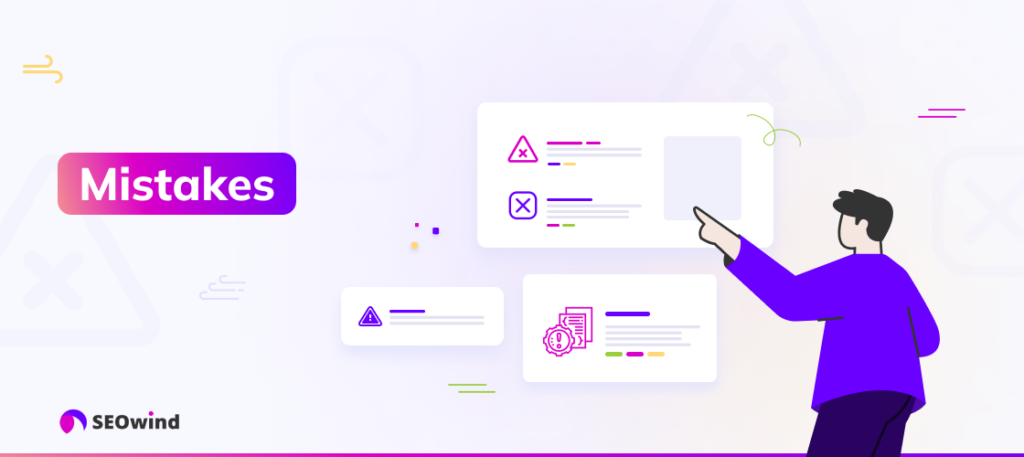
Content marketing can drive your business’s success. However, it can save time and resources if approached correctly. To ensure you build a robust content marketing strategy framework, avoid making the following mistakes:
Lack of Clear Goals
Setting specific, measurable, achievable, relevant, and time-bound (SMART) goals is critical for any content marketing framework. With clear objectives in mind, you can avoid creating irrelevant or ineffective content that doesn’t aligns with your overall marketing strategy or audience needs.
Neglecting Your Audience
Understanding your target audience is essential when developing a content marketing framework. Conduct thorough audience research to produce targeted and valuable content, such as analyzing demographics, interests, and pain points. Ignoring this crucial step can result in low engagement from users who do not find the information helpful or relatable.
Failing to Conduct a Content Audit
Performing a proper content audit provides insights into what has already been created and identifies gaps in your existing material within your aims and audience preferences. Skipping this step may cause unnecessary duplication of efforts and missed opportunities in perfecting your content framework.
Overlooking Competitor Analysis
By surveying competitors’ content strategies – including popular themes, formats, and posting frequencies – you understand their most effective techniques while identifying areas where you might break new ground on topics they have yet to cover.
Inconsistent Voice and Branding
Maintaining consistency across all published digital assets ensures professional credibility. It reinforces brand identity, among other vital traits that create lasting connections with audiences—a crucial aspect of building trust over time through quality storytelling experiences online.
Insufficient Promotion Strategies
Even exceptional pieces are doomed without strategic promotion plans ensuring they reach intended viewership targets quickly enough before becoming outdated due to internet algorithms constantly updating. Thus, it becomes imperative to create premier-tier writing and have integrated advertisement tools/social platforms amplifying each fresh submission.
Overlooking Analytics and Progress Tracking
To determine whether your content marketing framework is efficient, you must keep track of key performance indicators (KPIs), such as the website’s traffic, engagement rates, and lead generation metrics. Ignoring analytics can result in misinformed decisions about what type or format of content pieces will generate the best ROI moving forward.
Focusing Solely on Quantity over Quality
Quality should always take precedence. The often-cited maxim “Less is More” tends to apply here more often than not.
Tools and Resources for Developing an Effective Content Marketing Framework
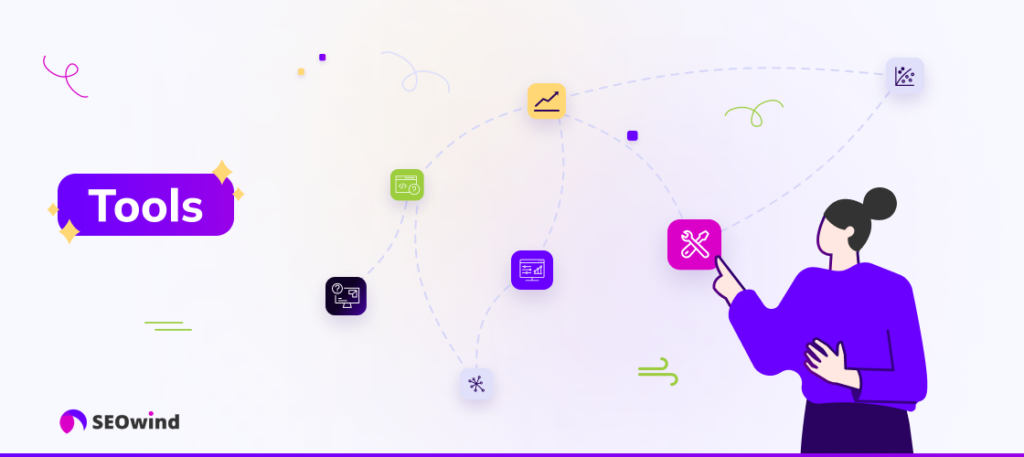
Creating a well-rounded content marketing framework requires the right tools and resources to manage all process aspects, from planning to publishing. The choice of tools depends largely on your organization’s specific needs and requirements.
Let me share some highly effective tools to help you develop a robust content marketing framework.
Project Management & Collaboration Tools
Effective project management is crucial when overseeing large projects like your content marketing endeavors. These platforms offer robust features to manage tasks, deadlines, budgets, team members, communication, and more – ensuring smooth operations across the board:
- Trello: This simple yet powerful task management tool categorizes tasks in customizable boards.
- Asana: This feature-rich project management software helps organize workflows while keeping everyone accountable for their roles.
- Basecamp: Designed for ease of use, it facilitates project collaboration, file sharing, messaging, and more within one central hub.
Analytics & Performance Tracking Tools
To keep track of how your content performs over time and optimize accordingly, these analytics tools come in handy:
- Google Analytics: A widely used platform providing granular insights into website traffic and audience behavior.
- Google Search Console: invaluable analytics and performance tracking tool that provides website owners with insights, data, and tools to optimize their site’s visibility, indexing, and usability within the Google search ecosystem.
- HubSpot: An all-in-one solution covering SEO analytics, social media performance tracking, and contact database management, among others.
- Social Media Analytics: Each major platform – Facebook Audience Insights and Twitter Analytics – offers native solutions to monitor engagement metrics for your posts.
Keyword Research & SEO Optimization Tools
For creating high-quality and engaging content that ranks well in search engines while targeting relevant keywords, use:
- Ahrefs: Offers keyword research capabilities alongside competitor analysis and backlink assessment.
- SEMRush: With an extensive array of features, including keyword research support, site audit functionality assists in optimizing content according to best SEO practices.
- Yoast: As a popular WordPress plugin, it provides real-time guidance on choosing keywords and writing SEO-friendly content.
More on keyword research and SEO tools you can find in the following Resources: 1. Discover the Best Keyword Research Tools of 2023 2. Best SEO Content Writing Tools: Write Better & Rank Higher
Content Creation & Editing Tools
No robust content marketing framework would be complete without efficient tools to create compelling content:
- SEOwind: AI writing tool for long-form content based on extensive content research.
- Grammarly: A powerful tool for checking grammar, punctuation, and readability scores and offering suggestions for improving your writing.
- Adobe Creative Cloud: Offers various applications catering to design, photography, and video production needs – including Photoshop, Illustrator, and Premiere Pro.
- Canva: User-friendly graphic design platform that empowers even non-designers to create visually striking content with pre-built templates.
More on AI Content Writing Tools you can find in the following Resources: 1. AI Content Writing Tools – The Best of 2023 2. 70+ Best Content Marketing Tools to Streamline Marketing Tasks
While this list is by no means exhaustive, these popular and versatile tools can significantly aid in reinforcing the effectiveness of your content marketing framework. Carefully evaluate your specific requirements and use available resources to streamline operations while maintaining high-quality output across all aspects of your strategy.
Conclusion
A well-executed content marketing framework is essential for businesses striving to generate leads, engage their audience, and convert them into customers. By understanding the core components of a content marketing framework and following the steps discussed in this article, you can create an effective blueprint that will serve as your roadmap to success.
To recap, an ideal content marketing framework should include the following:
- Clearly defined goals
- An in-depth understanding of your target audience
- Selection of appropriate platforms and content types based on research and analysis
- Allocation of team members with specific roles and responsibilities
- A consistent schedule for the creation, publishing, and promotion of content
- Employing promotional strategies to increase visibility and reach
- Integrating suitable tools and technologies to streamline process management
- Tracking progress against metrics to measure success levels
- Establishing a budget outlining available resources
Additionally, you can strengthen your overall approach by examining different content marketing strategy examples and incorporating various content formats.
As you build or optimize your content marketing framework, remember the common mistakes mentioned earlier to avoid them from the outset. Furthermore, don’t hesitate to explore tools and resources that facilitate the development of a practical content marketing framework explicitly tailored to cater to unique business needs.
Ultimately, executing a content marketing framework is vital in enhancing brand awareness among potential clients while fostering customer loyalty within existing ones, thus positively increasing company revenue.
Common Questions on Content Marketing Framework
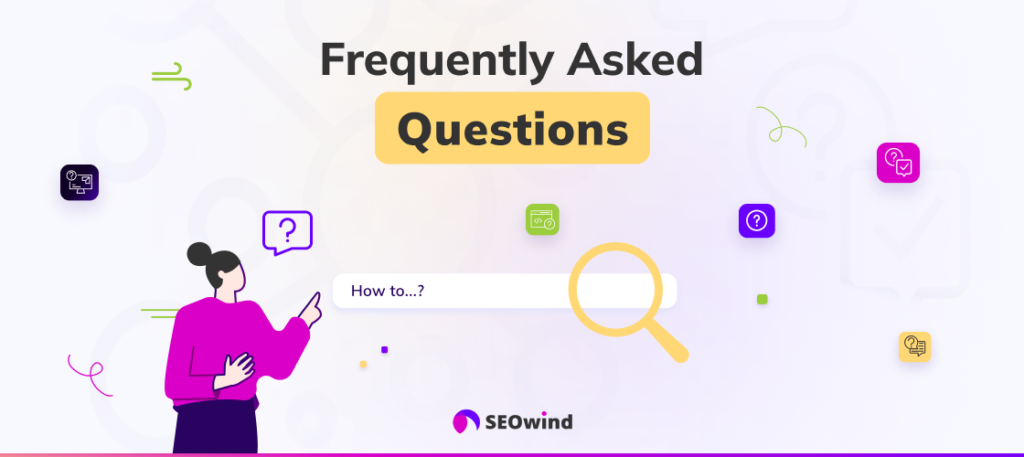
When and how do you use digital marketing frameworks?
Digital marketing frameworks come into play when organizations want to craft an integrated online presence encompassing social media platforms, email campaigns, search engine optimization (SEO), pay-per-click (PPC) advertising campaigns, content creation, and distribution methods. These frameworks provide a systematic approach to aligning all digital initiative aspects with overarching organizational goals.
Use digital marketing frameworks by following these guidelines:
- Define your goals: Establish clear objectives for your digital initiatives, such as improving brand awareness or increasing lead generation.
- Identify your target audience: Determine your ideal customers by conducting market research and creating detailed buyer personas.
- Assess existing online assets: Audit current digital assets like websites or social media accounts to identify areas needing improvement or performance metrics gaps.
- Choose suitable channels: Select appropriate platforms based on your objective(s), preferences of identified audiences, and where they tend to seek information relevant to what you offer.
- Create engaging content: Produce high-quality materials tailored for each platform picked (blog posts on blogs; infographics suitable for Pinterest etc.) while considering your audience’s preferences and needs.
- Promote your content: Plan targeted promotion campaigns for each piece, utilizing channels like email marketing or social media advertising to gain visibility with prospects likely to convert into customers.
- Gather data and analyze results: Use various tracking tools such as Google Analytics or other platform-specific analytics solutions to measure the performance of your digital marketing efforts about set objectives. Adjust strategies accordingly based on collected insights.
- Optimize and refine: Continuously improve processes — from targeting techniques to content production methods — by incorporating learnings from executed campaigns, user feedback, technological advancements, and industry trends.
Stay adaptable, innovation-driven, and data-informed when employing digital marketing frameworks. Doing so propels your organization towards attaining its desired objectives while ensuring online resources are utilized effectively.
Content Marketing Strategy Template
A content marketing strategy template is essential for anyone looking to create or improve their content marketing framework. It helps you outline your goals, target audience, content types, and promotion strategies you’ll implement throughout your marketing campaign. Using a well-designed template can save time, streamline the planning process, and ensure consistency across all aspects of your content marketing efforts.
When crafting a content marketing strategy template, consider incorporating the following elements:
Executive Summary
Begin by giving an overview of your content marketing initiative’s objectives and expected outcomes. This summary should be concise, outlining what you hope to achieve regarding brand awareness, lead generation, customer engagement, etc.
Goals & KPIs
Define specific and measurable goals that align with your broader business objectives. Establish key performance indicators (KPIs) for tracking progress toward these goals over time.
Target Audience
Identify the ideal customer persona(s) that your content is targeting. Include demographic information such as age, gender, location, interests, job titles, or industries they work in.
Content Pillars
Outline major themes or topics connected to your brand that will shape the subject matter within various pieces of content creation framework. These provide focus and direction for creating consistent messaging tailored toward different stages of the buyer’s journey.
Distribution Channels & Platforms
Determine which channels and platforms are most effective for reaching your target audience based on their preferences and online behavior patterns. This may include blog posts on your website, social media platforms like LinkedIn or Instagram, video-sharing sites like YouTube, or email campaigns.
Content Mix & Types
Select the variety of content types that best align with respective channels from the previous section – blog posts, eBooks, infographics, videos, podcasts, or others – and mention their proportion in the overall content marketing framework.
Content Creation & Production Process
Detail the process for creating content, from ideation through publication. Assign responsibilities to various team members such as editors, designers, writers, or videographers involved in content production.
Promotion Strategies & Techniques
Plan how you’ll amplify your content to reach your target audience effectively. Specify techniques like paid advertising, influencer partnerships, email campaigns, or organic social media sharing tactics that will be employed throughout your content strategy framework.
Measurement & Analysis
Include methods for collecting data on content performance concerning KPIs defined earlier using tools such as Google Analytics or social media analytic platforms. Plan for regular analysis and fine-tuning of your marketing efforts based on acquired insights for continuous improvement.
Timeline & Calendar
Establish a timeline outlining essential milestones and deadlines for deliverables throughout each phase of the campaign, along with a schedule specifying the frequency of publishing new pieces within your marketing strategy frameworks.
By following this template when designing your own content marketing strategy framework, you’ll equip yourself with an actionable blueprint tailored to address unique goals and challenges related to your niche industry, thereby improving the overall effectiveness of your marketing initiative’s outcomes.
